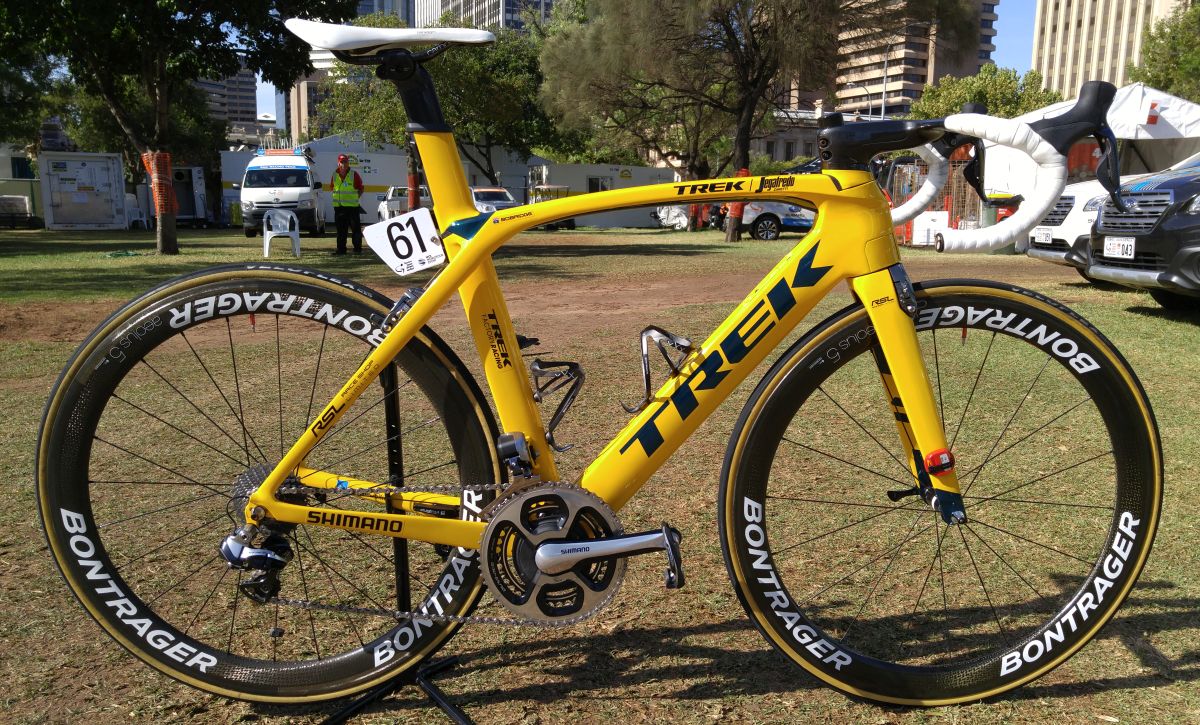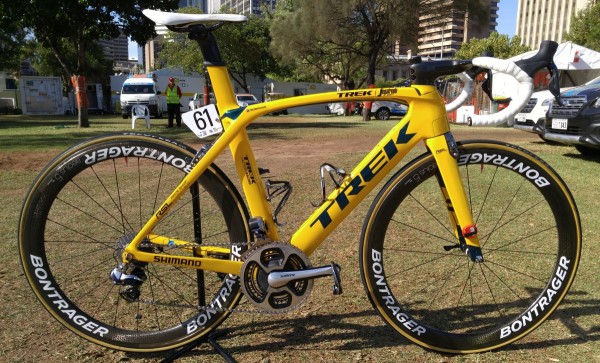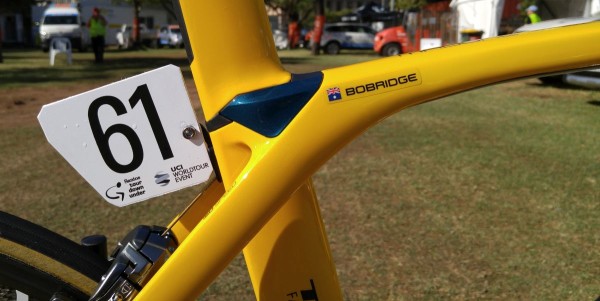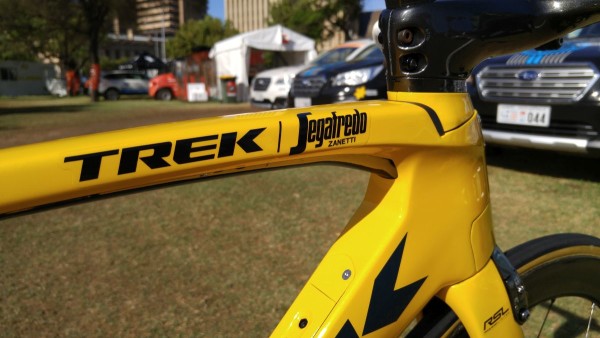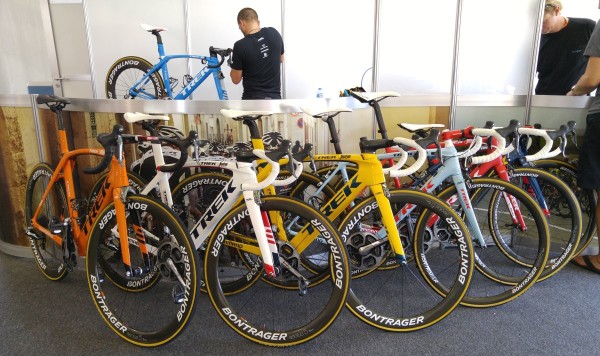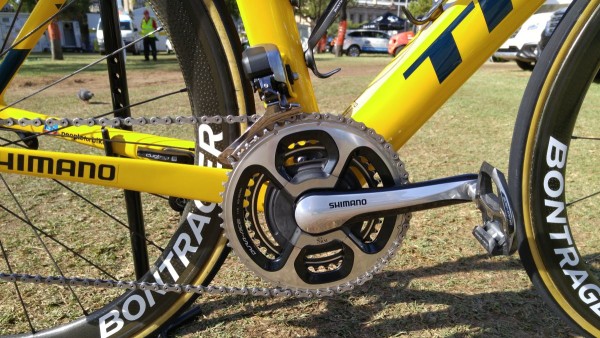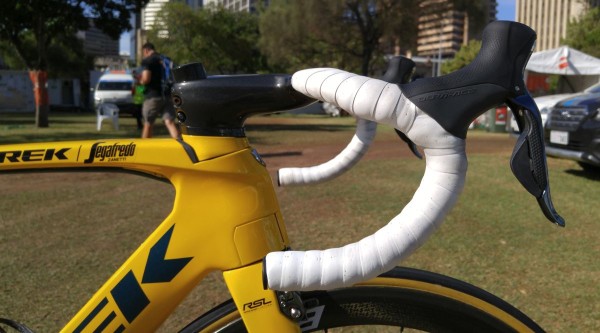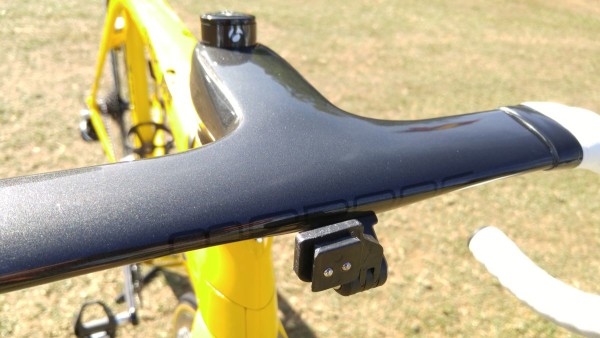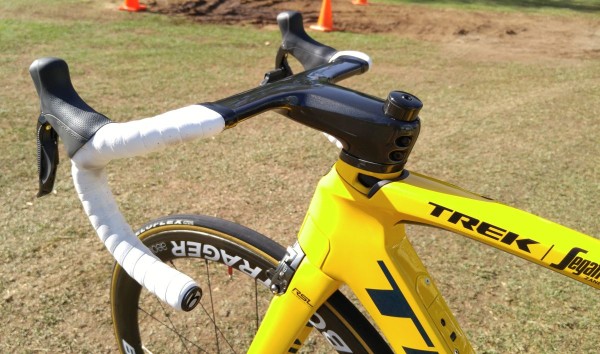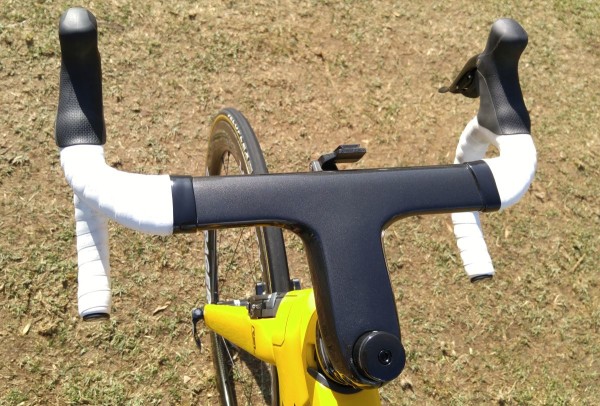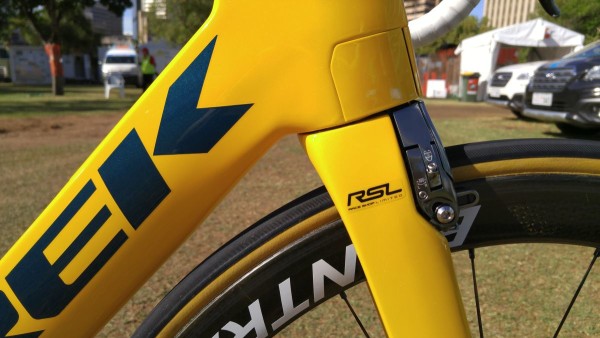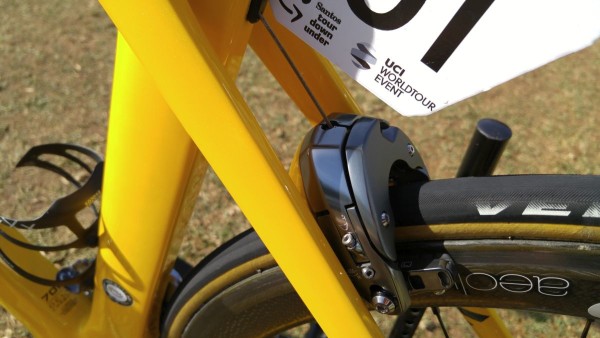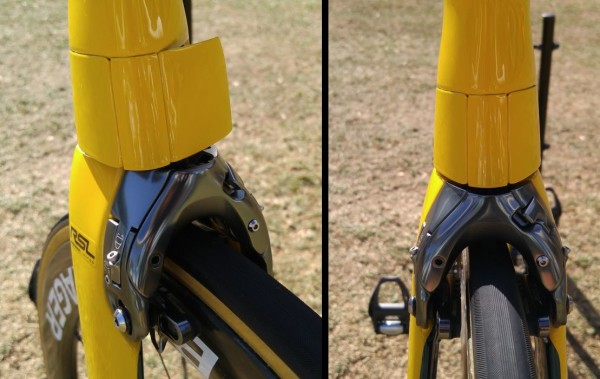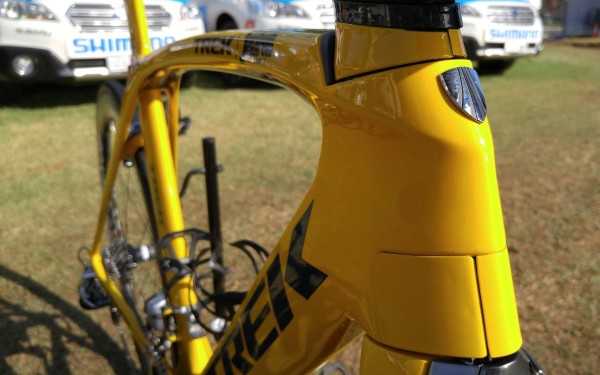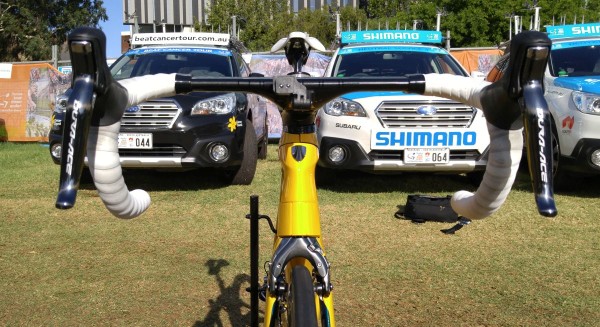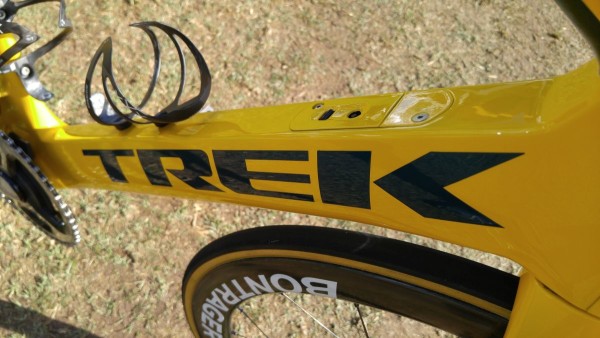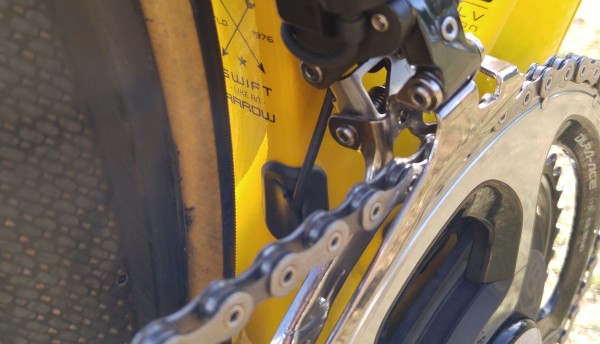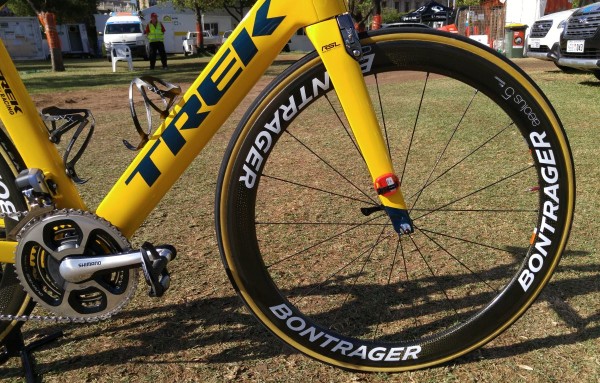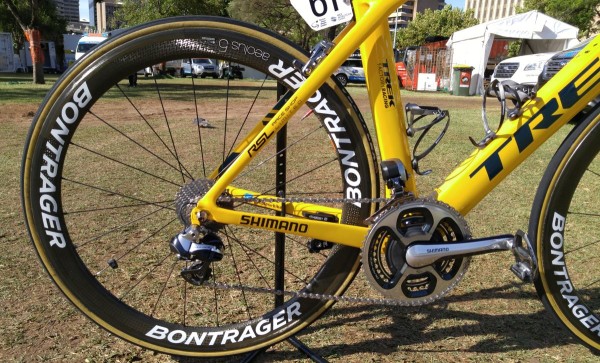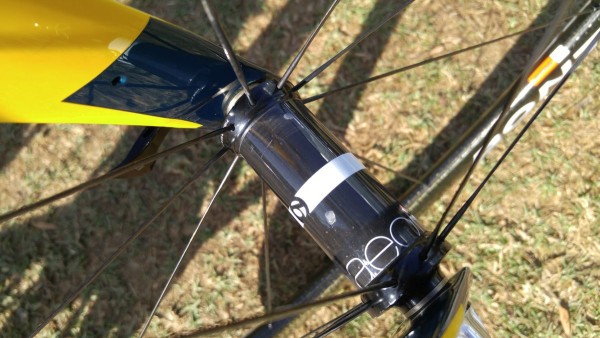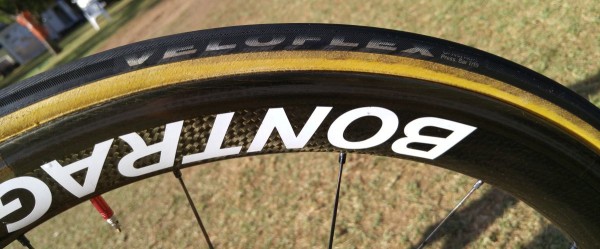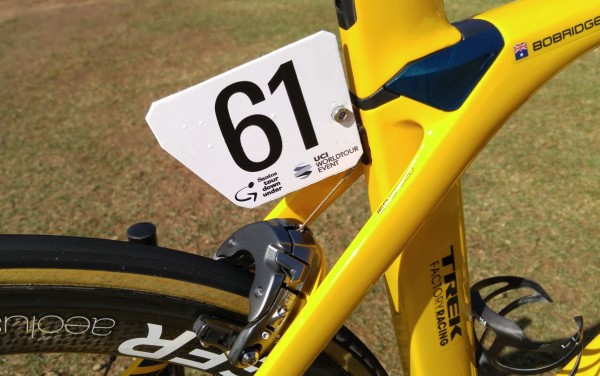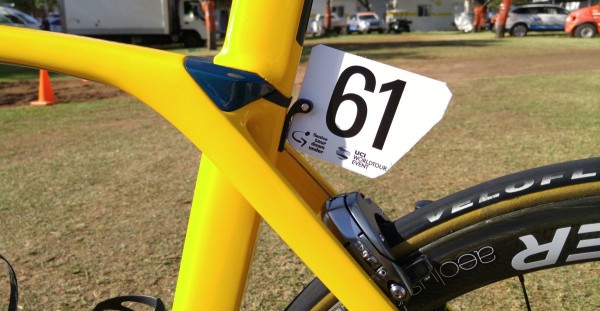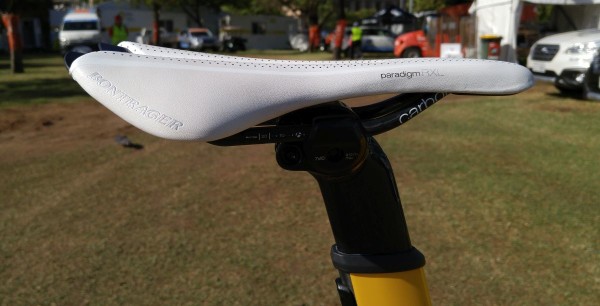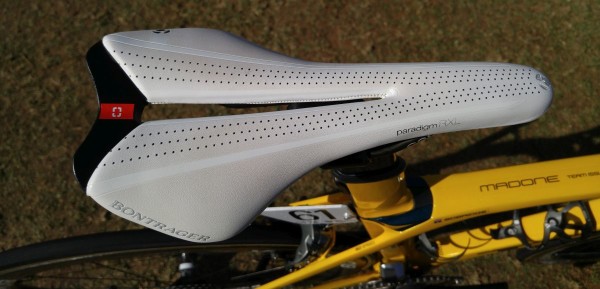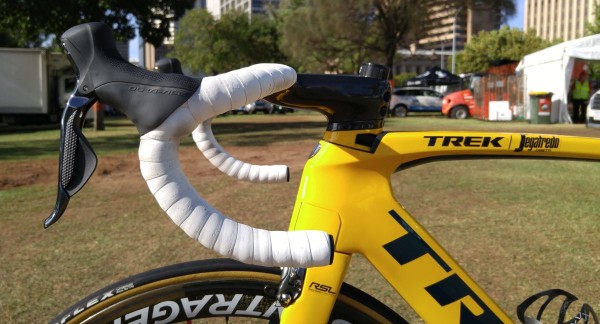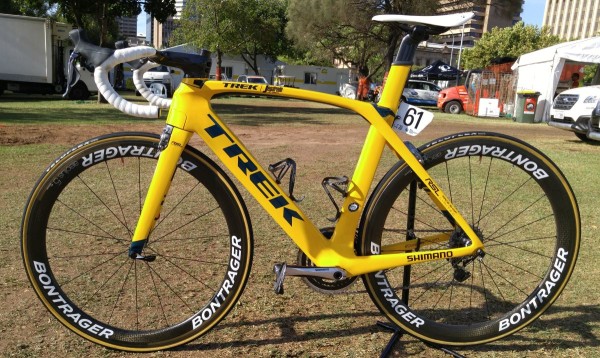Trek-Segafredo is an American professional cycling team founded in 2011 under the name Leopard Trek. The 2012 and 2013 seasons would see Trek joined by co-sponsors like RadioShack and Nissan, but eventually, Trek Bicycle Corporation parted company and took ownership of the team in 2014, and with it, its then ProTeam license. For 2016 to 2018, Trek is joined in co-title sponsorship by Segafredo, an Italian coffee brand. The 2016 Tour Down Under marks the team’s first race of the new season.
As the team name suggests, Trek bicycles supply the team’s racing bicycles. Trek was founded in 1975 in Milwaukee, Wisconsin as a subsidiary of Roth Corporation, an appliance distributor. In early 1976 with just five employees, the company relocated to Waterloo, Wisconson, where it remains to this day. The company has come a long way from those early years of steel touring frames. With 1,800 employees, the company arguably produces the best carbon fiber aero road frame available, the Trek Madone 9 series. This example of the Madone 9 Series in H1 geometry belongs to Trek Segafredo’s Jack Bobridge, a professional cyclist originally from Adelaide, who just happened to win the 2016 Australian National Road Championship. Here is Jack’s Championship winning bike…
Trek called upon their Project One custom program, to paint the bikes of the team’s riders at the 2016 Tour Down Under in their national colors. Jack’s recent Australian National Championship victory was a nice coincidence!
Finished in a striking yellow with dark green metallic accents, the paint scheme pays homage to Jack’s homeland of Australia. Below are the bikes of Boy Van Poppel (Netherlands), Jack Bobridge (Australia), Peter Stetina (USA), Ryder Hesjedal (Canada), Julian Arredondo (Columbia), Giacomo Nizzolo (Italy) and Keil Reijnen (USA).
Trek-Segafredo is another team sponsored by Shimano, with the company providing their top-tier electronic groupset, 11-speed Dura-Ace Di2.
SRM continue to supply the team with their crank-measured power meter technology.
No matter the angle you take to view Trek’s Madone 9 Series, it is aero. Beginning at the front, Jack’s bike is fitted with Trek’s integrated aero stem and handlebars.
Pictured above, the empty computer mount normally plays host to SRM’s PC8 head unit.
The aero goodness extends to the bike’s brakes, which are direct-mount, center-pull units. Compared to the offerings of other aero road bikes, the Madone’s brakes function appropriately, and sit perfectly flush with the fork and rear of the bike.
The other innovative feature of the brakes relates to the “Vector Wings”, that hide the front brake cables. When the handlebar is turned, these wings swing outward on hinges, preventing cables from being exposed to the wind.
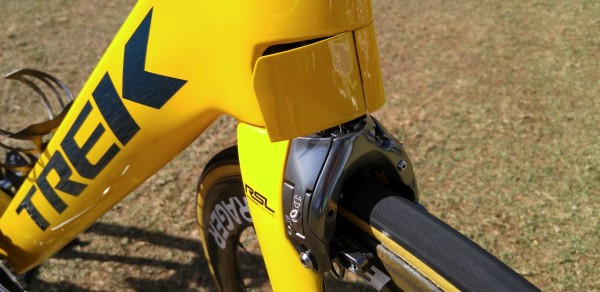
Ordinarily, the UCI would cry foul to Trek about the bike’s integrated brake fairings. However, Trek skirts around the UCI’s rule because of a neat marketing trick.
Not fairings, Trek names the Vector Wings a “covering”, or “rain protector”.
Shimano’s Di2 system is fully integrated into the frame. Normally hung beneath the stem, the system’s Junction A box is placed inside the downtube, between the front bottle cage and head tube. The “control center” as Trek call it, is accessed by a removable cover, which also houses the Di2 battery. When the cover is closed, the buttons of the Di2 Junction A box can still be accessed for system adjustments, etc.
The only Di2 electronic cables exposed anywhere on Trek’s Madone 9 series bike are at the front and rear derailleurs. This bike is the epitome of aerodynamic.
Trek constructs the Madone Series 9 (H1 fit) from 700 Series OCLV carbon, which they claim is the ultimate combination of superior modulus and superior strength.
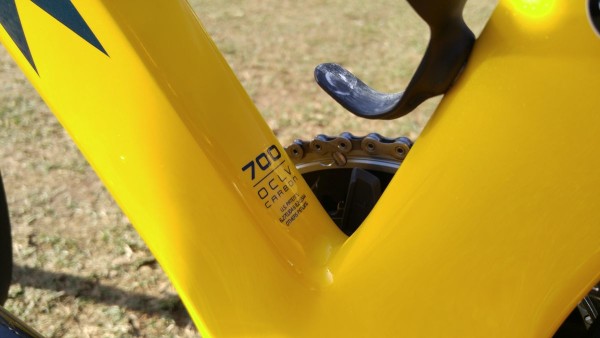
Keeping it in the Trek family, Bontager’s Aeolus 5 D3 tubular wheels are the official wheelset of Trek-Segafredo. With a 50mm OCLV rim that is USA made, the D3 rim profile is lightweight and aerodynamic.
The Aeolus 5 wheelset is laced to hubs featuring DT Swiss internals.
Not a mainstay in the pro peloton, Veloflex tubular tires in the narrow-by-today’s standards width of 23mm, provide the team’s tires.
An article about this bike would be incomplete if Trek’s Madone Isospeed Decoupler was not mentioned. Quoting Trek directly: “Trek engineers designed a decoupler that allows the seatpost to rotate independently from the top-tube-to-seatstay junction, increasing vertical compliance to twice that of our nearest competitor”. The aero cover pictured below and to the left of Jack’s name discreetly hides the Isospeed system.
Finally, Jack’s seating needs are handled by Bontrager’s Paradigm RXL saddle, perched atop the Madone’s aero seatpost.
While the 2016 Tour Down Under may be over at the time of this article, you can rest assured the Trek-Segafredo team will be racing hard on their Madone Series 9 aero bikes throughout 2016.
Photos and article by Gravel Cyclist.
Jayson O’Mahoney is the Gravel Cyclist: A website about the Gravel Cycling Experience.
